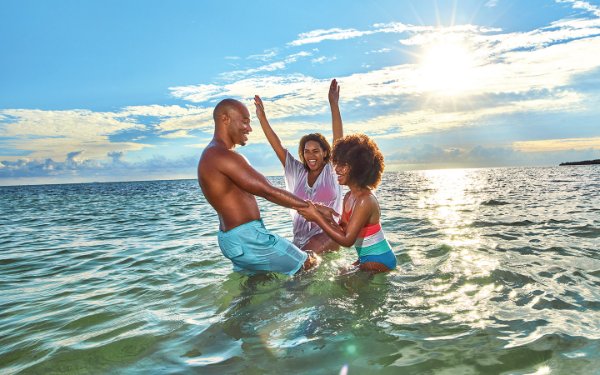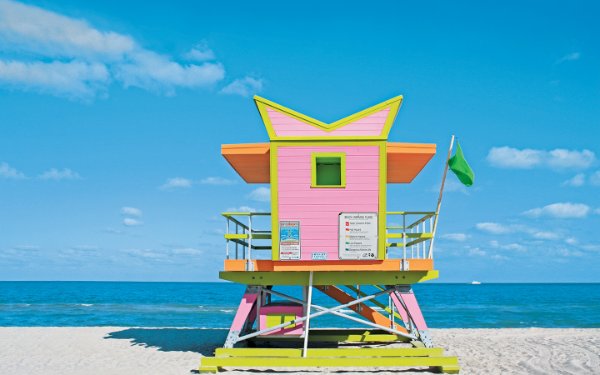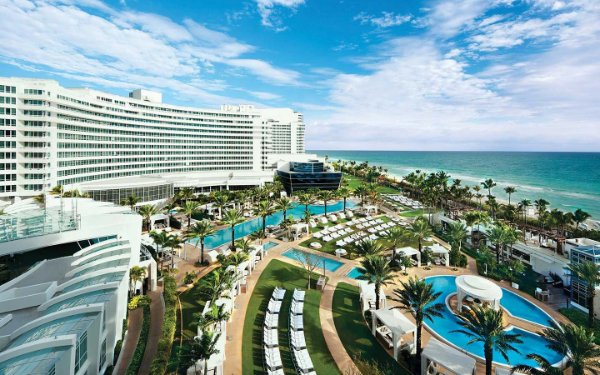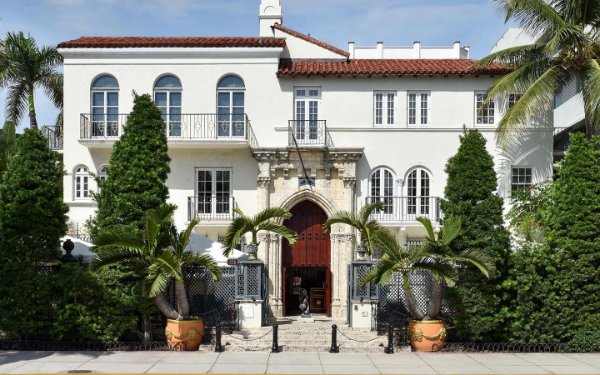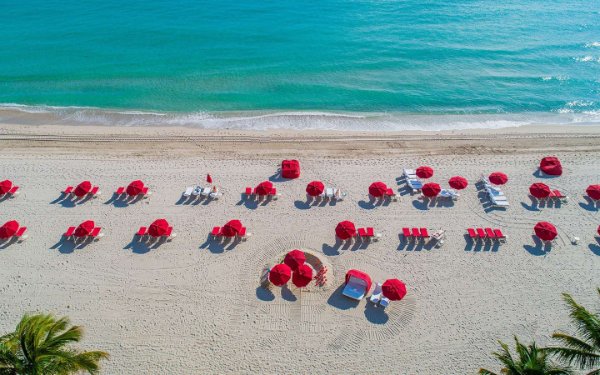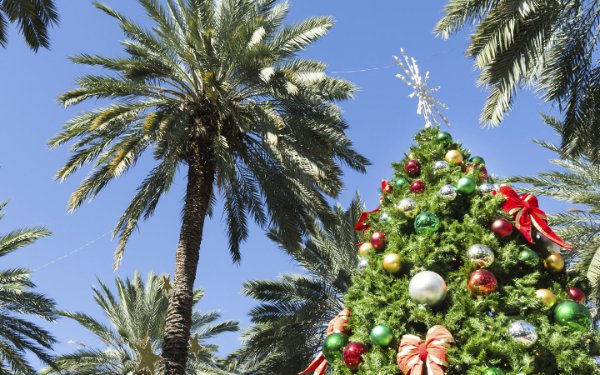The Greater Miami Convention & Visitors Bureau plans on providing regularly updated weather information to ensure the continued safety of residents and visitors as travel decisions are made based on developing weather circumstances.
Below are some resources and information available from the GMCVB, industry partners, governmental and non-governmental agencies to consider depending on focus area of needs:
Helpful links for hurricanes/tropical storm information:
Miami-Dade County Department of Emergency Management
City of Miami Beach Division of Emergency Management
City of Miami Division of Emergency Management
National Hurricane Center
National Weather Service
The Weather Channel
USA Today Travel & Weather
Florida Hurricane Center
National Climatic Data Center
Florida Division of Emergency Management
Florida Traffic & Commuter Information
State of Florida tourism-related information:
Visit Florida
GMCVB Corporate social media:
Instagram: @GreaterMiamiCVB
Corporate X: @GreaterMiamiCVB
LInkedIn: Greater Miami Convention & Visitors Bureau
GMCVB Consumer social media:
Instagram: @VisitMiami
X: @VisitMiami
Facebook: Visit Miami
YouTube: Visit Miami
Frequently Asked Questions about travel during storm season
Q: Is it okay to visit Greater Miami and Miami Beach during storm season?
A: Yes! Travelers can take advantage of great value season opportunities when visiting Greater Miami and Miami Beach during the summer and fall. As with many weather occurrences, nature can be unpredictable. In the case of hurricanes however, there is usually a sufficient window of time to prepare for a possible storm that could impact an area.
Q: When is hurricane season?
A: The Atlantic hurricane season is officially June 1 through November 30, with the peak of the season considered mid-August to mid-October.
Q: What is a hurricane?
A:A tropical cyclone with winds of 74 miles per hour (118 kilometers) or greater that occurs in the North Atlantic Ocean, Caribbean Sea, Gulf of Mexico, and in the eastern North Pacific Ocean.
Q: What is a tropical storm?
A: A tropical cyclone with winds of 39 to 73 miles per hour (63 kilometers) or greater.
Q: What is the difference between a hurricane or tropical storm warning and a hurricane or tropical storm watch?
A: The National Hurricane Center is the agency responsible for monitoring and issuing watches and warnings in the Atlantic and Northeast basins. A warning is issued when hurricane or tropical storm conditions are expected within 24-36 hours, and a watch when hurricane or tropical storm conditions are possible within 36-48 hours. If a warning or watch is issued, visitors should begin preliminary preparations for potential evacuation of hotels and airport delays or flight cancellations. Residents and visitors should monitor local news and weather reports to learn about potential street flooding from heavy rain or possible storm surge and high winds.
Q: What is the Eye of the storm? What are rain bands?
A: The hurricane eye is a relatively calm area about 20-40 miles in diameter with fare weather including partly cloudy skies and light winds. The eye wall, the area surrounding the eye is the most precarious with dense clouds and the highest force winds of a storm. The storm's outer rain bands are the bands of clouds and thunderstorms that trail away from the eye wall in a spiral fashion and can produce heavy bursts of rain and wind that can extend outward from 25 miles in a small hurricane to more than 150 miles for a large one. The right side of a hurricane is usually the most dangerous in terms of storm surge, winds, and tornadoes.
Q: Why are hurricanes named? Who names them?
A: The National Hurricane Center is responsible for naming tropical cyclones in the Atlantic basin. Hurricanes are named to provide ease of communication and reduce confusion between forecasters and the general public regarding forecasts, watches and warnings.
Q: In what ways do hurricanes and tropical storms actually help Florida's environment?
A: According to the Florida Department of Environmental Protection, hurricanes and tropical storms:
- Help to scrub harmful algae from coral reefs
- Prune dead limbs from trees allowing sunlight to penetrate the forest floor
- Deposit sand atop and on the backside of barrier islands, which elevates them, keeping islands from becoming a sand bar
- Produce rain that helps refill the aquifer
- Increases the water flow in natural springs
- Rehydrates dried out wetlands that benefit wildlife
- Downed trees are good for the scrub jays, increasing the endangered species' habitat
Q: What should I do if I am visiting Greater Miami and Miami Beach and a hurricane threatens the area?
A: Miami-Dade County emergency management officials keep in constant contact with the National Hurricane Center, based in South Florida. Should a storm threaten, for safety reasons, visitors are always asked to evacuate waterfront hotels temporarily until a hurricane warning is lifted. Although emergency officials will err on the side of caution, evacuation orders are only given if there is a significant storm threat.
Q: I'm visiting Greater Miami and Miami Beach and there is an order to evacuate the hotel I am staying. Where can I go and how do I get there?
A: There are several options. Check with the front desk or hotel concierge regarding availability at another hotel farther inland. The Greater Miami Convention & Visitors Bureau will work cooperatively with area hotels to advise on available vacancies in the area. As a last resort, if visitors do not relocate to other hotels or are unable to find available safe accommodation for evacuation, emergency evacuation centers are available for residents and visitors in Miami-Dade County. If visitors do not have a rental car or their own car while visiting, Miami-Dade County can provide buses to local hurricane shelters. Hotels can make arrangements for shuttle transportation.
Q: I have immediate plans to travel to Greater Miami and Miam Beach, but an evacuation has been ordered for the area I am scheduled to stay. Can I continue with those plans?
A: If an evacuation is ordered for the county, the hotels in these areas will not be open for business and will be in the process of relocating guests to inland hotels or shelters. Furthermore, most, if not all visitor facilities will not be open for business in preparation for the hurricane. It's best to reschedule travel plans to visit Greater Miami and Miami Beach once the storm has passed.
Q: When can we resume our vacation to Greater Miami and Miami Beach?
A: Visitors can resume their vacation plans once the storm has passed and any restricted access to the beaches has been lifted. If the storm has impacted Greater Miami and Miami Beach, visitors can resume vacation plans once electricity, road access and other infrastructure are restored. Check the GMCVB website at www.gmcvb.com for the latest information concerning the status of the area.
Q: What about lodging refunds?
A: Each property has its own refund policy. The GMCVB strongly urges the hospitality community in Greater Miami and Miami Beach to provide refunds of unused nights as soon as local officials issue a visitor evacuation order. The majority of properties subscribe to this standard. Prior to making a reservation, it is prudent for the visitor to have a clear understanding about a particular lodging facility's refund policies in the event of a hurricane threat. Several travel insurance plans are available from companies that can provide additional fiscal protection. Contact your travel agent for details or search online.
Q: What happens if there is a scheduled meeting or convention?
A: While the probability of a weather-related event impacting your meeting is low, to ensure meeting professionals’ confidence, VISIT FLORIDA has created a Cover Your Event program that offers supplemental insurance for costs related to re-booking a meeting or convention due to a named storm. Learn more about this consideration for weather assurance for meeting planners.
To best determine hotel availability during tropical storms and hurricanes, please see links below:
For updates on airport operations and flight status, see links below:
During a tropical storm, Miami-Dade Aviation Department airports prioritize safety, and visitors are generally not allowed in the terminals. Airports may temporarily close to the public, and airlines may also cancel or postpone flights due to weather conditions or airport closures. Access links for more information.
For status of PortMiami operations and cruise line Information:
Port operations including cruise terminals are temporarily closed for the duration of a tropical storm and vessels depart port and seek safer locations. Access links for more information.
Ground Transportation Information:


